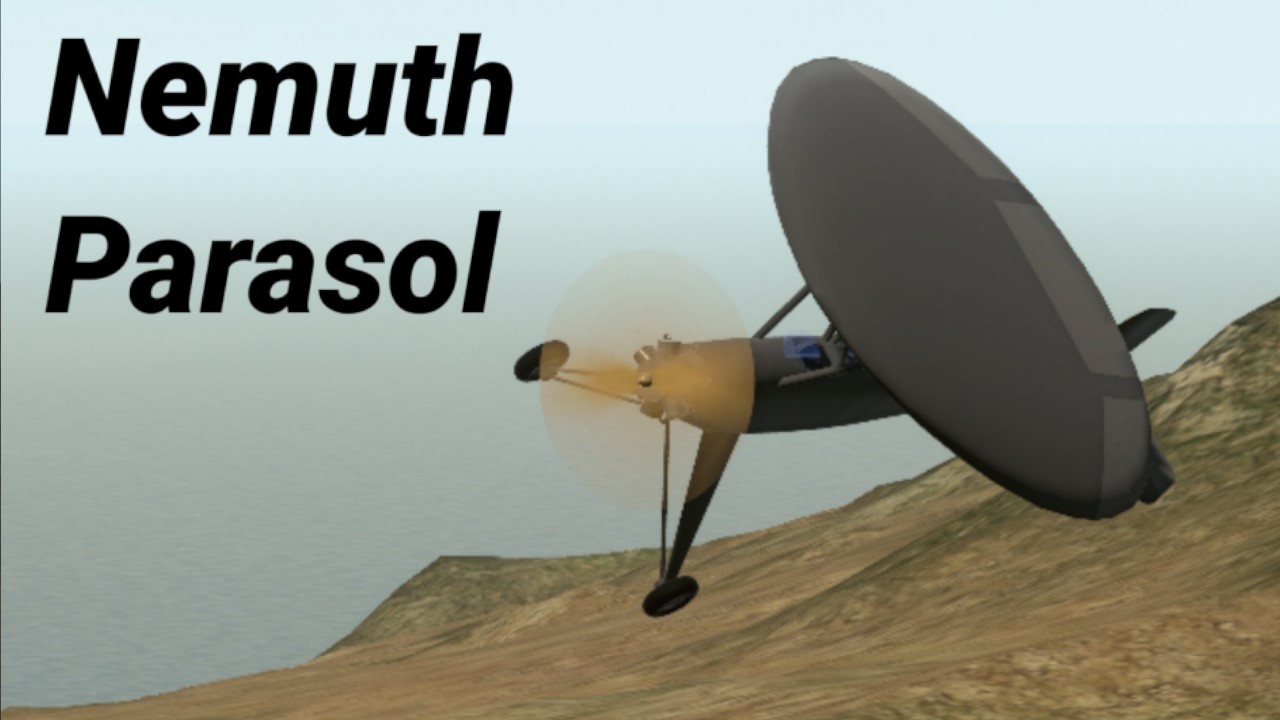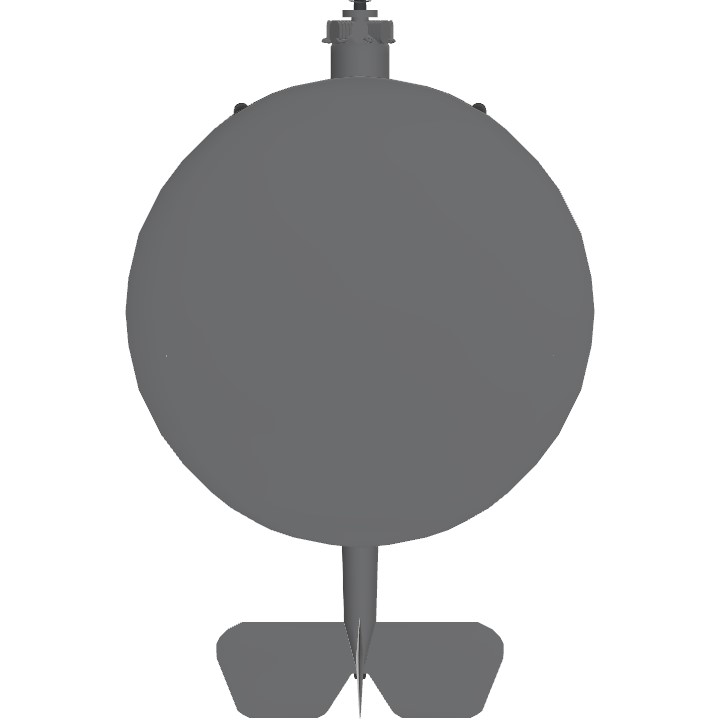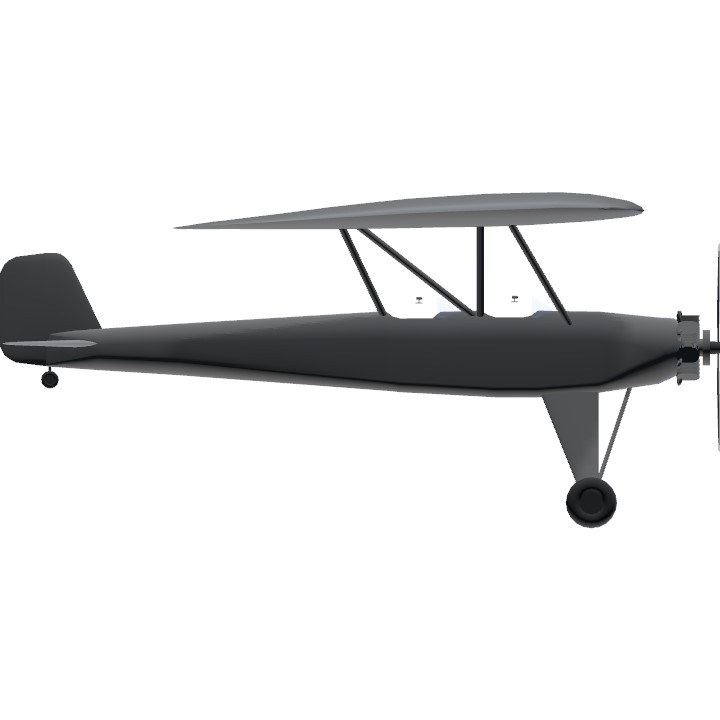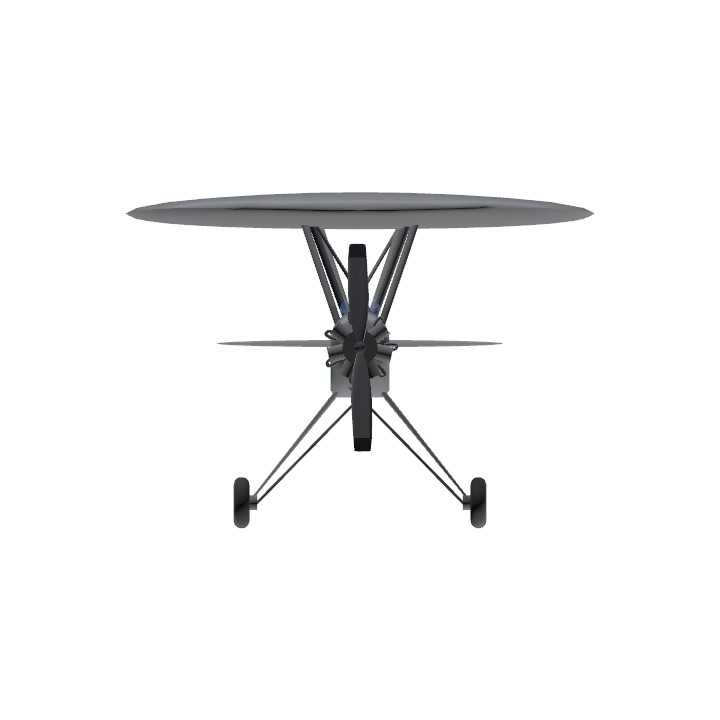About Nemuth(Nemeth) Parasol
Nemuth Parasol

The original Nemeth Parasol prototype was a taildragger that used a “round wing” design. It used a lengthened fuselage from a 1920s Alliance Argo biplane and was powered by a 90 hp Lambert engine. This was intended to give it better STOL performance. At the rear, two ailerons were added to help the plane land safely at slow speeds. The smaller size of the plane was a bonus, with one newspaper reporting that the “parachute plane” was ideal for landing in your backyard. And when you were done exploring the skies, you could store the plane in a hangar about the size of a large garage.
A newspaper in June 1934 declared that this brainchild of inventor Steven P. Nemeth was virtually “foolproof”, “stall-proof” and able to land just about in any field. Nemeth had been a former flight instructor at the McCook field (near Dayton, Ohio) before it shut down in 1927, and had been carrying out experiments on rotating wings for several years, since 1929.
Newspaper articles from that time

So students at Miami University constructed a prototype based on Nemeth’s design, so they could test configurations of circular wings. The resulting strange aircraft was called the Nemeth or Nemuth Parasol, and it was tested in 1934. People who observed the Nemeth’s test flight from the ground called it the “flying umbrella.” The round, saucer-like wings of the airplane spanned fifteen feet, leading many in the media to dub it a “saucer plane.”
According to Nemeth, the airplane was so easy to fly that someone who had never flown a plane before could learn to maneuver the Nemeth Parasol in thirty minutes. During testing, this strange aircraft achieved a speed of 135 mph, powered by the 110 hp Warner engine. Coupled with a relatively more mild landing speed of 25 mph, this made the machine quite an impressive craft.
Blueprint

During the test flight, Nemeth stalled the craft mid-air and let the disc wing do the work of a parachute. The demonstration was a success: with the motor off, the wing stabilized the aircraft, and it came down “almost vertically” to a gentle landing, according to a 1934 report from Popular Science. The Nemeth Parasol became the first round wing design to maintain consistent flight.
The Nemeth Parasol shared some characteristics with the Autogyro. It had a conventional rectangular fuselage, to which the circular wing was affixed with the help of braces, similar to high wing monoplane designs of the time. The craft had a front-mounted propeller, a rudder fitted with tail fins, and wheels under the fuselage. Nemeth omitted the pair of wings typically found on the Autogyro on the sides of the fuselage.
(quoted above from this link )
But I forgot to write "Not" in thumbnail!
But this plane is nothing like that!
The engine output is 250hp, the stall performance is poor, and the fuselage shape is different.
Therefore, this is not a replica!

Control
Throttle : Throttle
VTOL down : Flap
Pitth : Pitch
Roll : Roll
Yaw : Yaw
Caution
Be careful not to brake too hard or you will fall!
Have fun!
Specifications
Spotlights
- Tonnkatu 3.8 years ago
- HOPKINS234 3.8 years ago
- X99STRIKER 3.8 years ago
- Dragoranos 3.8 years ago
General Characteristics
- Created On Windows
- Wingspan 19.6ft (6.0m)
- Length 30.0ft (9.2m)
- Height 14.0ft (4.3m)
- Empty Weight N/A
- Loaded Weight 6,620lbs (3,003kg)
Performance
- Horse Power/Weight Ratio 0.037
- Wing Loading 8.9lbs/ft2 (43.2kg/m2)
- Wing Area 748.1ft2 (69.5m2)
- Drag Points 1325
Parts
- Number of Parts 247
- Control Surfaces 7
- Performance Cost 886





@Englishgarden weird but okay
@Robomo119DerMustangKiller skill issue
What the haill you make? Now America your not supposed to be weird and wonky thats Europe's job
You should host a challenge in which people need to use this wing design with modern or futurist looking fuselages. Just an idea.
@X99STRIKER I agree It is interesting
I saw a video about this plane a while ago, I didn't expect a simpleplanes replica of that lol
Edit: Not really, since it's not a replica
Wow very well made!
autogyro meets xf5u flying flapjack
beautiful aircraft
That’s the first time I’ve read the history of a plane and been interested.